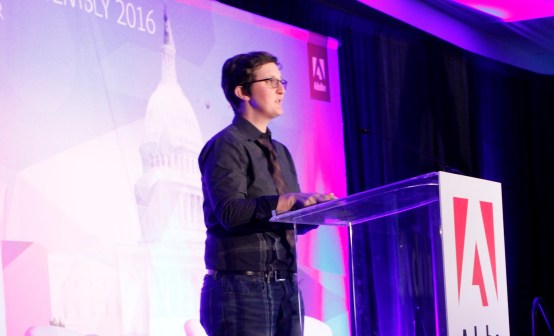Why 18F concentrates on changing culture
An “innovation specialist” at what’s considered one of the most pioneering tech agencies in government made a perhaps surprising remark during a talk on citizen services Tuesday.
“None of this is actually innovative.”
Raphael Majma of the General Services Administration’s 18F digital services team said he and his colleagues are focused on solving problems rooted in culture rather than putting out new code.
“The problems we face are problems every agency faces,” Majma said at a technology conference in Washington, D.C. “How do we get a site on a public server that a citizen can actually click on? How can we make sure we go through a proper process in which we can collect and assess information from citizens when appropriate?”
Majma and two other government IT experts said Tuesday the real innovation in government is coming from cultural changes not a new technology platform. While 18F has helped the government transform its digital presence, Majma said the success comes from instilling new ways of thinking. That thinking, combined with the technology the government has already bought, can deliver what was intended in the first place — government services that people can easily use.
“This is something that the American people already paid for,” Majma said. “This is something that we want to give back to them so that they can use it however they see fit.”
An early example of this new way of thinking actually pre-dates 18F. Peter Levin, formerly the chief technology officer of the Department of Veterans Affairs, said Blue Button — the online tool that makes patient medical records easy to download and share — was not born out of a new piece of technology but legacy systems cobbled together on top of data the department was already using. The agency had high returns on an investment that cost them nothing, Levin said.
Damon Davis, director of the Health Data Initiative for the Department of Health and Human Services, said one of 18F’s key goals is helping agencies realize the potential in opening data. While 18F pushes agencies to release data, it also provides agencies a way to share best practices across the federal landscape.
“I want to know what it is that the Department of Transportation is doing with their data, because we might have a similar issue,” Davis said. “This open communication is incredibly valuable as the entire government moves forward in open data and increased personal access into our own data and information.”
Meanwhile, 18F has been using more open source code in its own new projects, with the hope that other agencies will follow suit.
“Whenever we write any policy for ourselves or work with an agency to write a new policy, we ask them to do it as publicly possible,” Majma said. “We found that when we do that, we get a lot of responses from people. We get folks coming in who wouldn’t have ever weighed in on something and tell us what we need to do better.”
18F is gathering feedback through GitHub repositories instead of the Federal Register to allow people to weigh in on how projects come together.
“One, we show our work,” Majma said. “Two, we show that if we stand it up, there is no reason no one else should be able to. Three, it also allows us to gain acceptance and feedback from people outside the government.”
Davis said this push for openness allows the government to give people the power to create their own novel processes, such as using data to determine how much they should be paying for utilities or prescriptions.
“If data is available to help people find the social services that will help them alleviate their light bill or heat bill issue, then they can spend their time thinking about their health in a better fashion,” Davis said. “That’s innovation and discovery that has never happened before.”




